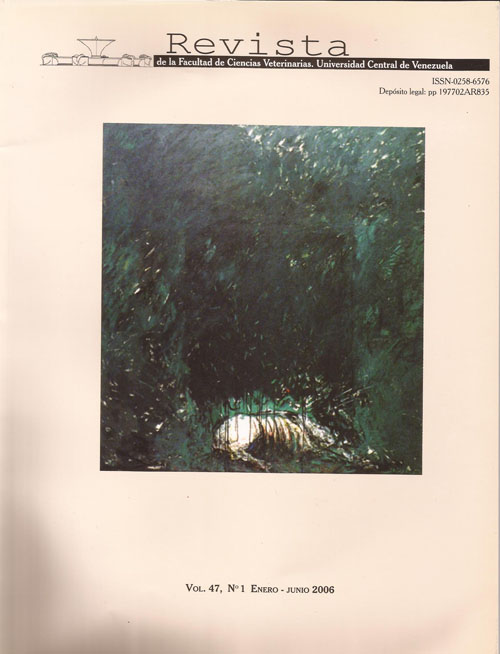ANATOMÍA DEL ÚTERO Y OVARIOS DEL CAPIBARA (HYDROCHOERUS HYDROCHAERIS): IRRIGACIÓN ARTERIAL
Contenido principal del artículo
Resumen
El objetivo de esta investigación fue describir el patrón vascular arterial del útero y los ovarios del Capibara (Hydrochoerus hydrochaeris). Para llevar a cabo este estudio se emplearon las técnicas de disección simple, clarificación de tejidos y microscopia óptica. Se evaluó un total de quince (15) hembras postpúberes de diferentes edades (6 meses a 2 años de edad). Este estudio demostró que la disposición anatómica de los cuernos, cuerpo y cuello del útero presenta características similares a las descritas en algunas especies de animales domésticos como la perra y la gata, y algunos roedores como la rata y el hamster. El tracto reproductivo está irrigado principalmente por la arteria ovárica, uterina y vaginal, las cuales establecen anastomosis ipsilaterales entre ellas y contralaterales entre las arterias uterinas y vaginales. Se evidenció que la arteria uterina representa la principal fuente de sangre arterial del ovario, enviando ramas segmentales hacia el cuerno y el cuerpo uterino, dividiéndose en su terminación en dos ramas que profundizan las paredes de ambas estructuras, anastomosándose con sus congéneres del lado opuesto. Se requiere más investigación en esta áreapara complementar la descripción de la irrigación arterio-venosa, lo cual permitiría un mejor entendimiento de la Fisiología reproductiva y el comportamiento sexual en esta especie.
Anatomy of the Uterus and Ovaries in the Capibara (Hydrochoerus hydrochaeris): Arterial Irrigation
ABSTRACT
The purpose of this study was to describe, for the first time, the vascular arterial pattern of the uterus and ovaries of the Capybara (Hydrochoerus hydrochaeris) using single dissection, light microscopy and tissue-clearing techniques. Fifteen (15) postpuberal females of different ages (6 months to 2 years) were assessed. This study showed that the anatomical arrangement of the uterine horns, body and cervix is similar to dogs, cats and some rodents such as hamsters and rats. The arterial supply to the reproductive tract is made up of the ovarian, uterine and vaginal arteries all of which establish ipsilateral anastomosis among them. They also establish contralateral anastomosis between the uterine and vaginal arteries. Organs evaluated revealed that the uterine artery represents the main arterial vessel to the ovary, sending segmental branches to the horn and uterine body, branching off at the endings into two branches that penetrate deep into the walls of both structures. Subsequently, these branches anastomose with opposite homologue vessels. Further studies in this area are required to complement the description of the arteriovenous supply. This would allow a better understandingof the reproductive physiology and sexual behavior in this species.
Anatomy of the Uterus and Ovaries in the Capibara (Hydrochoerus hydrochaeris): Arterial Irrigation
ABSTRACT
The purpose of this study was to describe, for the first time, the vascular arterial pattern of the uterus and ovaries of the Capybara (Hydrochoerus hydrochaeris) using single dissection, light microscopy and tissue-clearing techniques. Fifteen (15) postpuberal females of different ages (6 months to 2 years) were assessed. This study showed that the anatomical arrangement of the uterine horns, body and cervix is similar to dogs, cats and some rodents such as hamsters and rats. The arterial supply to the reproductive tract is made up of the ovarian, uterine and vaginal arteries all of which establish ipsilateral anastomosis among them. They also establish contralateral anastomosis between the uterine and vaginal arteries. Organs evaluated revealed that the uterine artery represents the main arterial vessel to the ovary, sending segmental branches to the horn and uterine body, branching off at the endings into two branches that penetrate deep into the walls of both structures. Subsequently, these branches anastomose with opposite homologue vessels. Further studies in this area are required to complement the description of the arteriovenous supply. This would allow a better understandingof the reproductive physiology and sexual behavior in this species.
Descargas
Los datos de descargas todavía no están disponibles.
Detalles del artículo
Número
Sección
Artículos de Investigación
